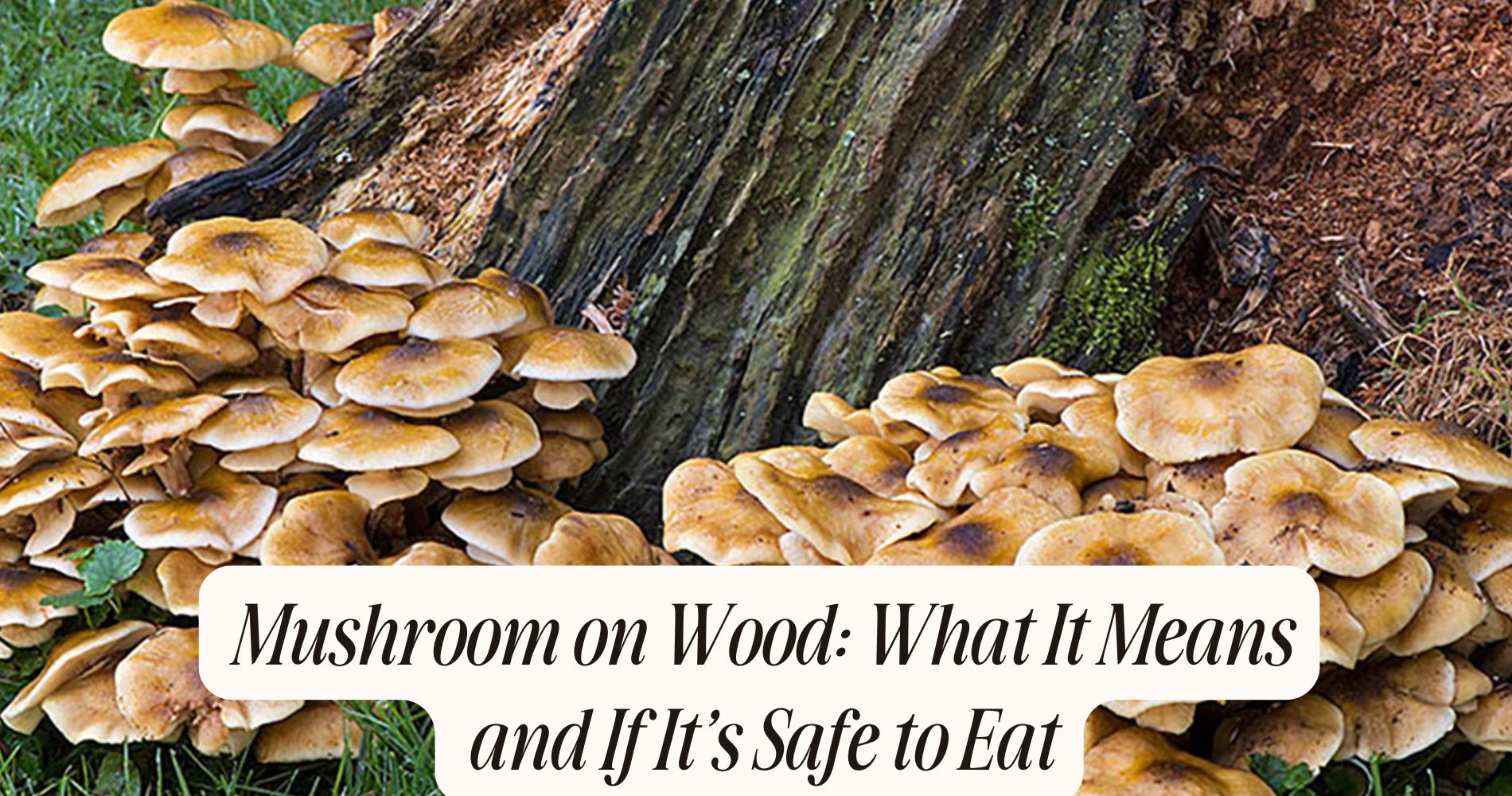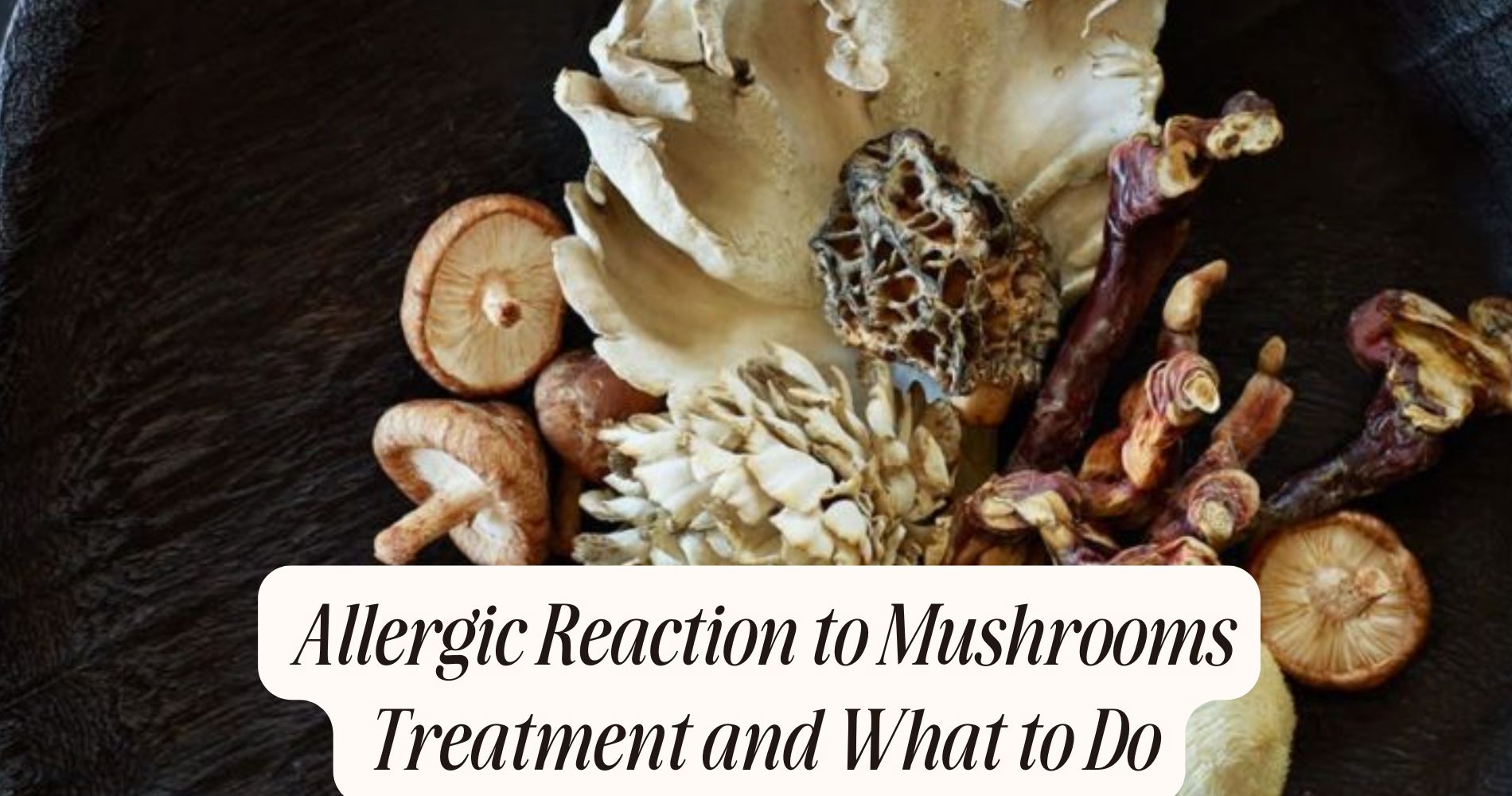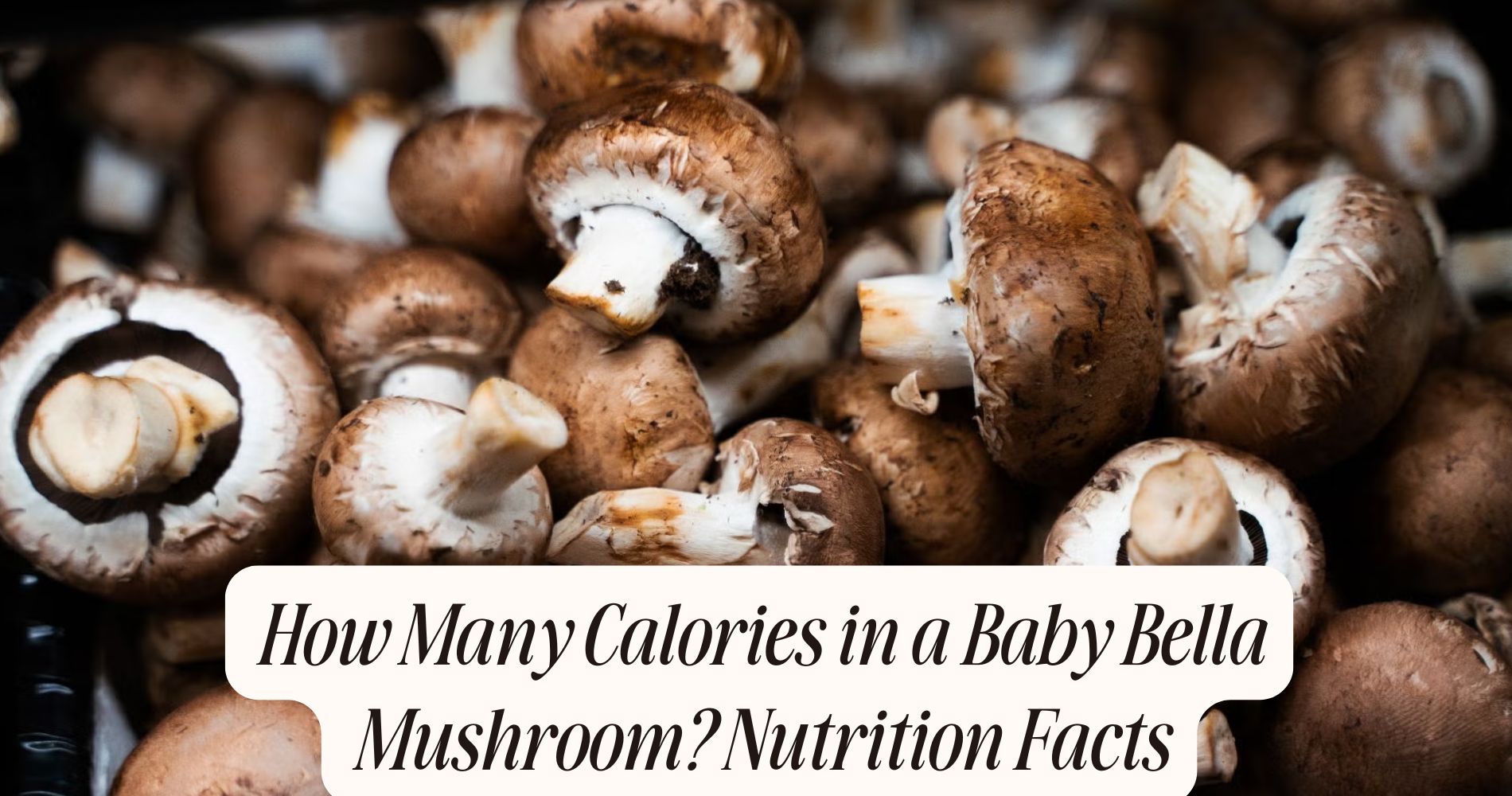
Mushroom on Wood: What It Means and If It’s Safe to Eat
Mushrooms on wood play a vital role in breaking down organic material and recycling nutrients within ecosystems. However, not all wood-dwelling mushrooms are safe to eat. It’s important to accurately identify edible species by examining their characteristics, like cap shape and spore print color, while being cautious of toxic varieties. Before foraging, equip yourself with knowledge to guarantee safety and enhance your culinary experience. Discover more about the types and benefits that these mushrooms offer.
Understanding the Ecology of Mushrooms on Wood
Although mushrooms often evoke images of damp forests, their relationship with wood is a complex interplay of biology and ecology. You’ll find that mushrooms engage in various forms of symbiosis, particularly with trees, where they form mycorrhizal relationships. These associations enhance nutrient exchange, benefiting both the fungi and the host tree.
Mushroom symbiosis plays a critical ecological role, facilitating decomposition and nutrient cycling within forest ecosystems. As wood decays, fungi break down complex organic materials, returning essential nutrients to the soil. This process not only supports plant growth but also sustains diverse animal populations.
Understanding these interactions deepens your appreciation for the intricate web of life that wood-dwelling mushrooms contribute to, highlighting their importance in maintaining ecological balance.
Common Types of Wood-Breaking Mushrooms
The intricate relationships fungi form with wood extend beyond nutrient exchange; they also include various species specifically adapted to break down and decompose wood. Among these, wood decay fungi stand out for their critical role in ecosystem sustainability.
You’ll often encounter species such as Ganoderma lucidum, known for its shelf-like growth on hardwoods, and Trametes versicolor, recognized for its colorful, layered appearance.

These fungi not only contribute to nutrient cycling but also enhance mushroom diversity within their habitats. As they digest lignin and cellulose, they transform dead wood into fertile soil, fostering new plant growth.
Understanding these wood-breaking mushrooms helps you appreciate their ecological significance while recognizing the complex interactions in forest ecosystems.
Identifying Edible Mushrooms
When you set out to identify edible mushrooms, it's important to focus on key characteristics that distinguish them from toxic varieties.
Start by examining the cap shape and color; many edible mushrooms have distinct, vibrant hues. Pay attention to gills—whether they’re free or attached to the stem—and the spore print, which can vary in color.
Stems can provide clues too; look for thickness and texture. Familiarize yourself with common edible species in your area through reliable guides.
Always note the habitat; certain mushrooms thrive in specific environments. For effective edible mushroom identification, use mushroom foraging tips like observing seasonal growth patterns and consulting local experts.
Recognizing Toxic Mushrooms
When you're foraging for mushrooms, it's essential to recognize common toxic species and their distinguishing features.
Pay attention to characteristics like cap shape, color, and spore print, which can indicate potential toxicity.
Understanding these traits not only enhances your safety but also enriches your knowledge of fungal diversity.
Common Toxic Species
While exploring the fascinating world of mushrooms, it's vital to recognize the common toxic species that can pose serious health risks.
Some notorious toxic mushroom species include the Amanita phalloides, also known as the death cap, and the Amanita muscaria, or fly agaric. Consuming these mushrooms can lead to severe mushroom poisoning symptoms, such as nausea, vomiting, abdominal pain, and even liver failure in extreme cases.
Identifying these harmful varieties in their natural habitat is important for your safety. Always err on the side of caution and avoid mushrooms you can't confidently identify.
Identifying Poisonous Characteristics
How can you confidently differentiate between edible and poisonous mushrooms? Start by observing toxic indicators like cap shape, gills, and color. Many poisonous mushrooms, such as the Amanita species, exhibit distinct features, including smooth, shiny caps and white gills.
Next, examine spore patterns by collecting a spore print—place the cap on paper for several hours. This will reveal the spore color, which can be a critical identification factor.
Remember that some edible mushrooms can resemble toxic varieties, so cross-reference your findings with reliable field guides. Trust your research and never consume a mushroom unless you’re sure of its identity.
When in doubt, consult an expert to avoid potential poisoning. Safety should always be your priority.
The Role of Wood in Mushroom Growth
When you consider mushroom cultivation, wood serves as a crucial nutrient source, providing the necessary carbon and minerals for growth.
Different types of wood, such as hardwoods and softwoods, influence the species of mushrooms that thrive, each offering distinct benefits.
Additionally, environmental factors like moisture and temperature play a critical role in how effectively mushrooms utilize wood as a substrate.
Wood as Nutrient Source
Wood serves as an essential nutrient source for many mushroom species, providing necessary carbon, nitrogen, and minerals for their growth.
As mushrooms colonize decaying wood, they engage in wood decay processes, breaking down complex organic compounds. This decomposition not only releases critical nutrients but also facilitates nutrient cycling within ecosystems.

You’ll find that fungi play a key role in transforming dead plant material into forms that other organisms can utilize. By enzymatically degrading lignin and cellulose, mushrooms reveal these nutrients, ensuring they’re available for their own development and for the surrounding soil.
This symbiotic relationship between mushrooms and wood highlights the significance of fungi in maintaining ecological balance and supporting biodiversity through efficient nutrient recycling.
Types of Wood Used
While various species of mushrooms thrive on different types of wood, each type offers unique properties that influence fungal growth and nutrient absorption.
Hardwood species, such as oak and maple, contain dense fibers and complex carbohydrates, providing a rich substrate for mycelium to flourish. Their slower decomposition rates contribute to extended nutrient availability, enhancing mushroom yield.
In contrast, softwood differences, like those found in pine or cedar, can inhibit certain fungi due to high resin content, which may be toxic or overly acidic.
However, some mushrooms, like shiitake, adapt well to softer woods, leveraging their unique chemical compositions.
Understanding these wood characteristics helps you select the most suitable substrates for cultivating specific mushroom varieties, optimizing growth conditions for your harvest.
Environmental Impact on Growth
How does the environment influence mushroom growth on wood substrates? The environmental conditions play a significant role in determining suitable mushroom habitats.
Factors like moisture, temperature, and light affect the decomposition processes of wood, which in turn influences mycelial colonization. High humidity creates a conducive environment, promoting fungal growth by preventing desiccation.
Conversely, extreme temperatures can inhibit development or kill spores. Additionally, the type of wood affects nutrient availability; hardwoods often provide richer resources than softwoods.
Microbial activity also shapes these habitats, as competing organisms can either inhibit or support mushroom growth. Understanding these interactions helps you appreciate the delicate balance that sustains vibrant mushroom populations in natural ecosystems.
Seasonal Factors Influencing Mushroom Appearance
As temperatures fluctuate and precipitation patterns shift throughout the seasons, the appearance of mushrooms can change dramatically.
Seasonal moisture plays an essential role in this process. During wet seasons, higher humidity and abundant rainfall foster ideal conditions for fungal growth, often leading to a surge in mushroom populations. Conversely, in drier months, the lack of moisture can inhibit growth, resulting in fewer visible mushrooms.

Temperature fluctuations also greatly impact mushroom life cycles; warmer temperatures can accelerate growth rates, while colder conditions may delay or halt development.
Understanding these seasonal dynamics helps you predict when and where mushrooms might appear, enhancing your ability to observe their fascinating diversity throughout the year.
Foraging Safety Tips
When foraging for mushrooms, ensuring your safety should be your top priority, especially since many species can be toxic or even deadly.
Start by equipping yourself with proper foraging gear, including a field guide, a basket for your finds, and gloves to handle unknown mushrooms. Always choose safe routes that are well-marked and familiar; avoid areas with heavy pesticide use or pollution.
Before consuming any mushroom, conduct thorough research, as visual characteristics can sometimes be misleading. If you’re uncertain about a species, consult an expert or local foraging group.
Cooking and Preparing Wild Mushrooms
After guaranteeing your safety in the field, the next step is to properly cook and prepare wild mushrooms to savor their unique flavors and textures.
Various cooking techniques enhance their taste and reduce any potential toxins. Sautéing, grilling, or roasting are effective methods, as high temperatures break down certain compounds.
Always clean your mushrooms thoroughly to remove dirt and contaminants. For long-term enjoyment, consider mushroom preservation methods like drying or pickling.
Drying concentrates flavors and extends shelf life, while pickling adds an acidic tang. Remember, proper cooking not only boosts flavor but also guarantees safety, as some mushrooms require thorough cooking to eliminate harmful substances.
Enjoying wild mushrooms can be a delightful culinary experience when approached with care and knowledge.
The Nutritional Benefits of Edible Mushrooms
Edible mushrooms offer an impressive array of nutritional benefits that can enhance your diet. They're low in calories and fat, making them an excellent choice for weight management.
Rich in essential vitamins like B-complex and D, mushrooms support energy metabolism and bone health. Their high antioxidant content, including selenium, helps combat oxidative stress, contributing to overall health benefits.
Additionally, mushrooms provide dietary fiber, promoting gut health and aiding digestion. In culinary uses, their umami flavor enhances dishes, making them a versatile ingredient in various cuisines.
Incorporating mushrooms into your meals not only boosts nutrition but also adds depth to flavors, promoting a balanced and health-conscious diet.
Cultivating Mushrooms on Wood at Home
Cultivating mushrooms on wood at home opens up a fascinating world of mycology that not only provides fresh produce but also enhances your gardening experience.
To begin, select suitable mushroom substrates, such as logs or wood chips, that are rich in cellulose and lignin. Common choices include oak, maple, and beech. Inoculate these substrates with mushroom spores or spawn, ensuring ideal conditions for mycelium growth.

Maintain moisture and humidity levels while monitoring temperature to encourage successful colonization. After a few months, you'll witness your mushrooms fruiting, ready for harvest.
This sustainable form of home cultivation not only yields delicious mushrooms but also contributes to your understanding of ecological cycles and the importance of decomposers in nature. Enjoy the process!
Wood-Grown Power, Simplified: SUPER MUSHROOM GUMMIES
Fascinated by the idea of a mushroom on wood and wondering which ones are safe and beneficial? Skip the guesswork and savor the benefits with Well Gummies' SUPER MUSHROOM GUMMIES. These vegan, chewable gummies harness the power of 10 functional mushrooms—many of which naturally grow on wood—formulated to support brain health, calm energy, and immune balance. With a juicy wild berry flavor and no jitters or crash, they make mushroom wellness easy, tasty, and safe—no foraging required. Enjoy nature’s best in every bite with Well Gummies!
Frequently Asked Questions
Can Mushrooms on Wood Cause Allergic Reactions in Some Individuals?
Yes, mushrooms can trigger allergic reactions in some individuals due to mushroom allergies. When exposed, your immune response may mistakenly identify proteins in mushrooms as harmful, resulting in symptoms like itching, swelling, or respiratory issues.
How Long Can Mushrooms Last After Being Harvested?
After harvesting, mushrooms typically last about one week if stored properly. Utilizing mushroom preservation techniques like refrigeration and dehydration can extend their shelf life considerably, making harvest timing essential for ideal freshness and quality.
Are There Specific Wood Types That Promote Mushroom Growth?
Certain wood species, like oak and maple, greatly promote mushroom growth due to their cellulose and lignin content. Understanding this interaction enhances your knowledge of fungal ecology, revealing how different environments support diverse fungal life.
Can Cooking Eliminate Toxins From Poisonous Mushrooms?
Cooking methods can't reliably eliminate toxins from poisonous mushrooms. You must prioritize toxic mushroom identification before consumption. Many toxins remain heat-stable, meaning cooking won't negate their harmful effects. Safety lies in proper identification, not in preparation.
Is There a Risk of Contamination From Mushrooms on Treated Wood?
Yes, there's a risk of mushroom contamination when growing on treated wood. Chemicals in the wood can leach into the mushrooms, potentially leading to harmful ingestion. Always assess the wood treatment before consuming any mushrooms.
Conclusion
In summary, encountering mushrooms on wood can be intriguing, but it’s essential to approach this natural phenomenon with caution. While many wood-breaking species are edible and nutritious, some can be toxic or even deadly. Always prioritize proper identification and foraging safety, and consider cultivating your own mushrooms to guarantee safety and quality. By understanding the ecology and characteristics of these fungi, you can enjoy their benefits while minimizing risks associated with wild foraging.




